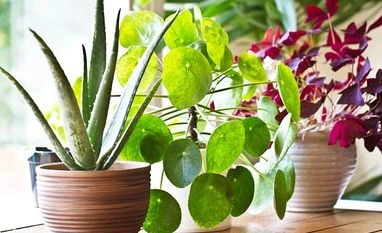If you have read his ‘The Botany of Desire’, you would know what follows. But in case you haven’t, he goes on to elaborate that both the statements are true. Pollan calls humans 'bumblebees' – manipulated by plants into hauling their pollen from blossom to blossom.
This manipulation could be in the form of a pleasant fragrance, the ability to purify air, medicinal properties, edible fruits, et al.
More From This Section
The pandemic, however, saw a larger number of human bumblebees sowing seeds. From coping with boredom, decorating newly created home-offices, to getting influenced by the social media green trends, people had different reasons for doing so.
However, despite buying quality plants, spending hours watching youtube tutorials, and investing in tools and appliances, many failed to sustain their indoor, green plants. Where did they go wrong, especially when there was no lack of effort?
The plant you fancy on an Instagram post by a friend who stays miles away may not be an ideal fit for your indoor green space.
To check if a plant is a right fit for your region, look for its temperature tolerance and the ecosystem it belongs to, says Swami Prem Parivartan, founder of Give Me Trees Trust, one of the largest communities that plants and preserves trees in India.
For instance, Ficus benjamina, Areca palm, Sansevieria and certain hardy plants do well indoors in Delhi-NCR. Completely different vegetation will grow well in cities like Bengaluru and Chennai, where humidity is high.
Give Me Trees Trust has facilitated the plantation and preservation of over 20 million trees during the past 44 years, with 16,000-plus volunteers working pan-India.
The popular perception that indoor plants don’t require air and sunlight is not true. They too need air and light and can’t thrive in a claustrophobic environment, Parivartan avers.
The room's carpet area, source of light, and ventilation need to be factored in while buying an indoor plant, he adds.
Popularly known as Peepal Baba, Parivartan has planted more than 12.5 million Peepal trees in India and is also working with the United States Forest Service.
Big trees with large leaves such as Peepal, Banyan, Jamun (Java Plum), Gular (cluster fig), Pilkhan (white fig), Gulmohar (Royal poinciana), Neem, Amaltas (Golden shower tree), and Arjuna (Terminalia arjuna) are excellent purifiers, he recommends, therefore best fit for high pollution region of Delhi-NCR.
To read the full story, Subscribe Now at just Rs 249 a month
Already a subscriber? Log in
Subscribe To BS Premium
₹249
Renews automatically
₹1699₹1999
Opt for auto renewal and save Rs. 300 Renews automatically
₹1999
What you get on BS Premium?
-
Unlock 30+ premium stories daily hand-picked by our editors, across devices on browser and app.
-
Pick your 5 favourite companies, get a daily email with all news updates on them.
Full access to our intuitive epaper - clip, save, share articles from any device; newspaper archives from 2006.
Preferential invites to Business Standard events.
Curated newsletters on markets, personal finance, policy & politics, start-ups, technology, and more.
Need More Information - write to us at assist@bsmail.in
)